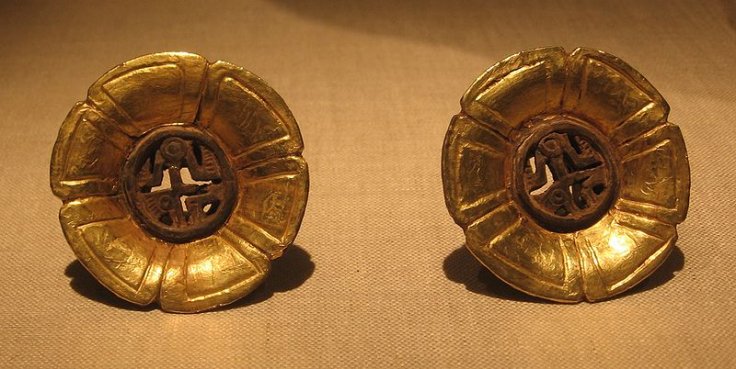An Aztec gold bar which could have been produced around the 1500s was found to be a part of the Spanish loot from the time. The plunder was abandoned by the Spanish when the native warriors forced a hasty retreat of the Spaniards. The gold bar has traces of the Aztec era according to the experts at the National Institute of Anthropology and History on Thursday.
Hernan Cortes and his soldiers fled the city on June 30, 1520, for a brief period of time where they left the loot in the city. A day before the Spaniards fled, the Aztec emperor Moctezuma was killed, with the possibility of a murder being in question. This ensued a period when the Spanish chronicler and his soldiers to flee the city along with his native allies.
Gold Bar from downtown Mexico City

This year marks 500 years of the Spaniards fleeing the capital. They returned a year later and lay siege to the capital which was weakened by biological weapons introduced by the Spanish to the capital city of Tenochtitlan.
The bar from the loot was found in 1981 during a construction project. It hidden some 16 feet below the surface of downtown Mexico City, has traces of all the Aztec characteristics of gold and was also identified by the imagery provided by the looters.
According to the INAH, the bar which weighs 2 kg (4.4 lb) and is 26.2 cm (10.3 inches) long, 5.4 cm (2.1 inches) wide and 1.4 cm (half an inch) thick, was made during 1519-1520. This coincides with the time when the Aztec treasury was looted by the Spanish and gold melted into bars. The looters were said to have been weighed down by the amount of gold they were carrying during the night they fled called the 'sad night' or 'noche triste'.
The present advances in technology led to the discovery of understanding when the gold would have been made in Aztec. The chemical X-ray that was conducted on the bar of gold led to this. This was seen as a unique moment by the Lopez Lujan an archaeologist who conducts excavation in the nearby sites. The advances led to filling the gaps in the history of the empire which was only there on historical documents.









